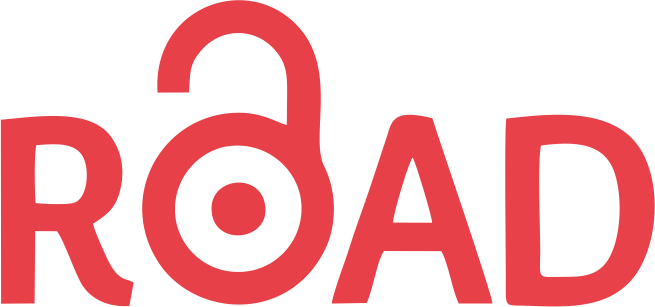Decision Algorithm for Heuristic Donor-Recipient Matching
Abstract
This paper introduces the application of artificial intelligence paradigm towards precision medicine in renal transplantation. The match of the optimal donor-recipient pair in kidney transplantation in Latvian Transplant Centre (LTC) has been constrained by the lack of prediction models and algorithms. Consequently, LTC seeks for practical intelligent computing solution to assist the clinical setting decision-makers during their search for the optimal donor-recipient match. Therefore, by optimizing both the donor and recipient profiles, prioritizing importance of the features, and based on greedy algorithm approach, advanced decision algorithm has been created. The strength of proposed algorithm lies in identification of suitable donors for a specific recipient based on evaluation of criteria by points principle. Experimental study demonstrates that the decision algorithm for heuristic donor-recipient matching integrated in machine learning approach improves the ability of optimal allocation of renal in LTC. It is an important step towards personalized medicine in clinical settings.
References
Collins, F.S., Varmus, M.D.: A New Imitative on Precision Medicine. New England Journal of Medicine 372,793-795 (2015). DOI:10.1056/NEJMp1500523
Gluck, C., Ko, Y.-A., Susztak, K.: Precision Medicine Approaches to Diabetic Kidney Disease: Tissue as an Issue. Current Diabetes Reports 17(5), art. no. 30. (2017). DOI: 10.1007/s11892-017-0854-7
Hamlet, P., Tremblay, J.: Artificial Intelligence in Medicine. Metabolism Clinical and Experimental 69, 36-40 (2017). DOI: 10.1016/j.metabol.2017.01.011
Munakata, T. Fundamentals of the New Artificial Intelligence: Neural, Evolutionary, Fuzzy and More. 2nd edn. Springer-Verlag, London (2008). DOI: 10.100/978-1-84628-839-5
Kido, T., Swan, M.: Machine Learning and Personal Genome Informatics Contribute to Happiness Science and Wellbeing Computing: Association for the Advancement of Artificial Intelligence 362-368 (2016).
Shaikina, T., Lowe, D., Daga, S., Briggs, D., Higgins, R., Khovanova, N.: Machine Learning for Predictive Modelling based on Small Data in Biomedical Engineering. IFAC-PapersOnLine 48(20), 469-474. (2015). DOI: 10.1016/j.ifacol.2015.10.185
Ahlert, M., Kliemt, H.: Problems of Priority in Kidney Allocation and Beyond. The European Journal of Health Economics 14(3) 383-390 (2013). DOI:10.1007/s10198-012-0382-y
Akl, A., Ismail, A.M., Ghoneim, M.: Prediction of Graft Survival of Living-Donor Kidney Transplantation: Nomograms or Artificial Networks? Transplantation, 86(10), 1401-1406 (2008). DOI: 10.1097/TP.0b013e31818b221f
Wolfe, R., McCullougha, K., Schaubelb, D., etc.: Calculating Life Years from Transplant (LYFT): Methods for Kidney and Kidney-Pancreas Candidates. American Journal of Transplantation 8(4p2), 997-1011 (2008).
Alalouf, A., David, I., Pliskin, J.: Computing the Probabilities of HLA-Like Matching. Annals of Operations Research 221(1), 33-45 (2014). DOI: 10.1007/s10479-011-1049-2
Yahav, I., Shmueli, G.: Outcomes Matter: Estimating Pre-Transplant Survival Rates of Kidney-Transplant Patients using Simulator-Based Propensity Scores. Annals of Operations Research 216(1), 101-128 (2014). DOI: 10.1007/s10479-013-1359-7
Salvioli, M., Lucchetti, R., Torelli, R.: Simulating the Impact of Crossover Kidney Transplantation on the Nord Italia Transplant Program. Games 7(4), 30 (2016). DOI:10.3390/g7040030
Abbas, A.K., Lichtman, A.H., Pillai, S.: Cellular and Molecular Immunology, 8th ed. Elsevier/Saunders: Philadelphia, PA, USA (2015).
Brown, T.S., Elster, E.A., Stevens, K., etc.: Bayesian Modeling of Pretranspant Variables Accurately Predicts Kidney Graft Survival. American Journal of Nephrology 36, 561-569 (2012). DOI:10.1159/000345552
Briceno, J., Cruz-Ramirez, M., Prieto, M., etc.: Use of Artificial Intelligence as an Innovative Donor-Recipient Matching Model for Liver Transplantation: Results from a Multicenter Spanish study. Journal of Hepatology 61(5), 1020-1028 (2014). DOI: http://dx.doi.org/10.1016/j.jhep.2014.05.039
Clinical Guidelines for Kidney Transplantation (in Latvian). Latvijas Transplantācijas centrs. (2015). ISBN 978-9984-813-71-4
Rahimi, S.A., Jamshidi, A.: Priortization of Organ Transplant Patients using Analytical Network Process. Proceedings of the 2014 Industrial and Systems Engineering Research Conference, 3544-3551
Benjelloun, O., Garcia-Molina, H., Menestrina, D., Su, Q., Whang, S.E., Widom, J.: Swoosh: a Generic Approach to Entity Resolution. The VLDB Journal 18(1), 255-276 (2009).
Elmagarmid, A.K., Ipeirotis, P.G., Verykios, V.S.: Duplicate Record Detection: A Survey. IEEE Trans. on Knowl. and Data Engineering, 19(1),1-16 (2007).
Ravikumar, P., Cohen, W.W.: A Hierarchical Graphical Model for Record Linkage. In: Proceedings of the 20th Conference on Uncertainty in Artificial Intelligence – UAI’2004, Banff, Canada, pp. 454-461. AUAI Press Arlington, Virginia, United States (2004).
MENDEL open access articles are normally published under a Creative Commons Attribution-NonCommercial-ShareAlike (CC BY-NC-SA 4.0) https://creativecommons.org/licenses/by-nc-sa/4.0/ . Under the CC BY-NC-SA 4.0 license permitted 3rd party reuse is only applicable for non-commercial purposes. Articles posted under the CC BY-NC-SA 4.0 license allow users to share, copy, and redistribute the material in any medium of format, and adapt, remix, transform, and build upon the material for any purpose. Reusing under the CC BY-NC-SA 4.0 license requires that appropriate attribution to the source of the material must be included along with a link to the license, with any changes made to the original material indicated.







